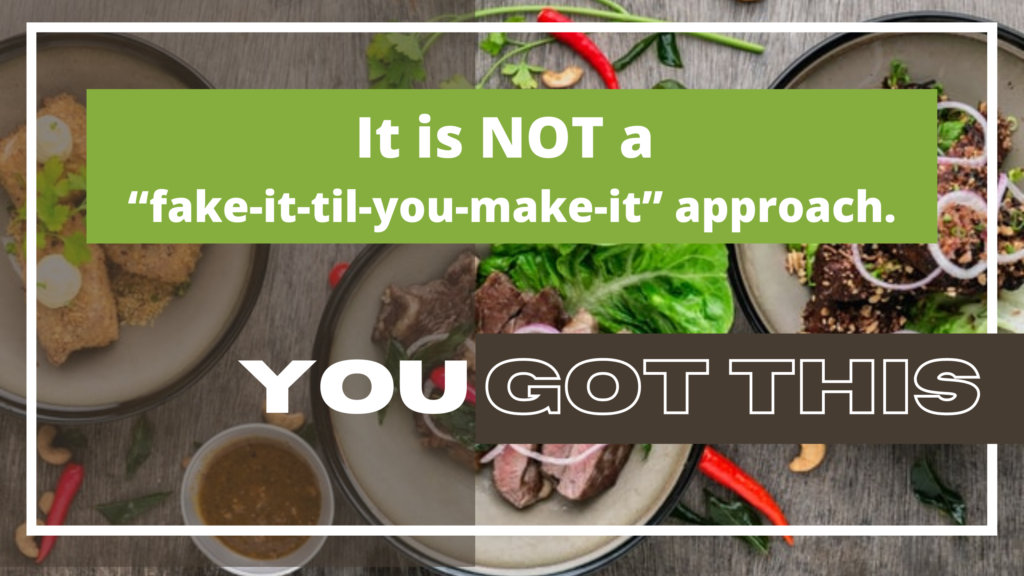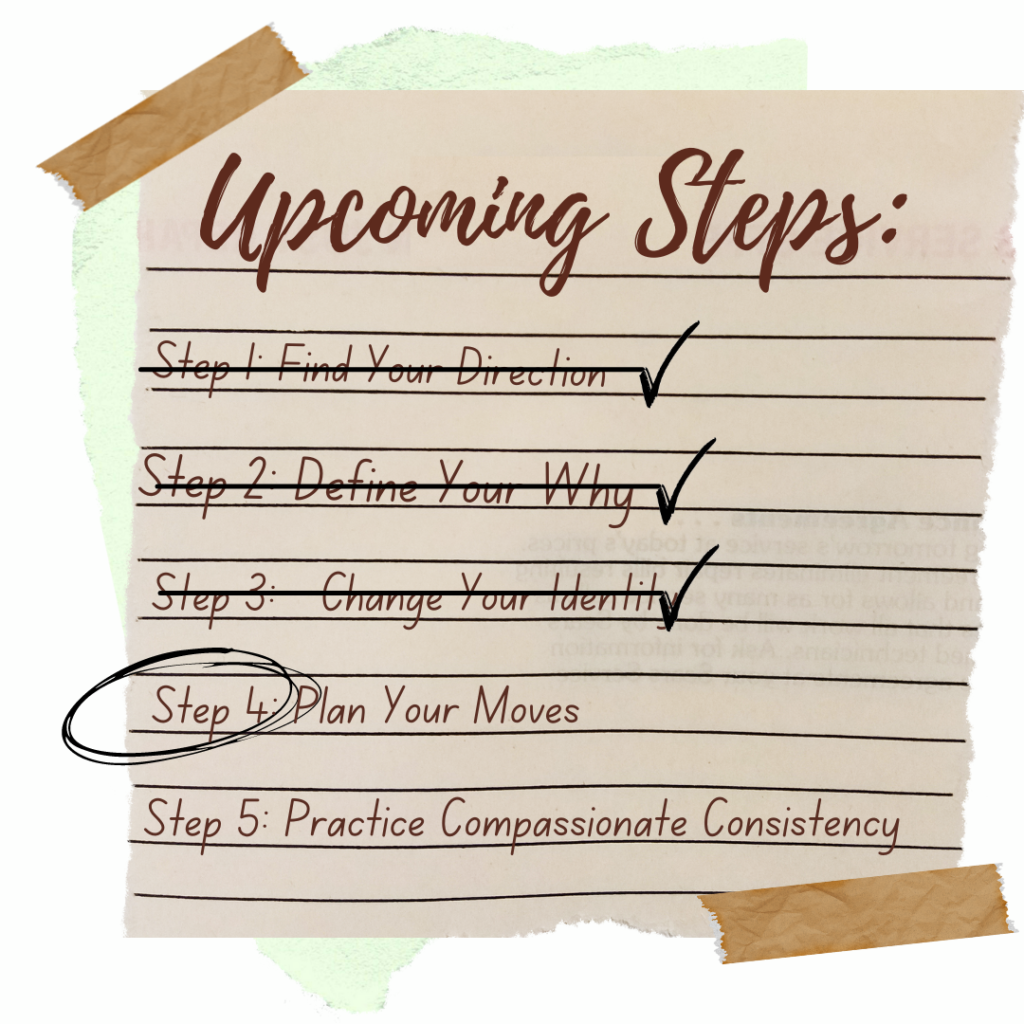You have your clear direction. You have defined your Why that is deeply personal. Now you must become this new person. We often think of identity change as the end-goal: “Once I lose 50lbs, then I will be healthy” or “Once I start seeing results, then I’ll like going to the gym.”
However, choosing to embody this “new-you” first can help simplify any hurdles along the way and keep you taking your next steps toward your goal. You have to believe that this your new and permanent identity.
Here are some real-world examples of how identity change demolishes obstacles:
- If you want to eat less meat but your friend wants to meet at your favorite burger restaurant, you can think: “I am a vegetarian during the week. I’ll just order the veggie burger.”
- If you want to quit smoking and a friend offers you a cigarette, you can think: “I am a non-smoker. I don’t want that cigarette.”
- If you want to start going to the gym regularly, you can think: “I am someone who likes going to the gym.”

It’s telling yourself and others who you are now. As an aside, if you tell others of your new-identity, you’ve now created some external accountability, another way to help keep habits going (and to keep friends from asking you to smoke!)
Thinking this way also removes the deprivation mindset, a serious barrier to change. You aren’t depriving yourself if you truly believe in your new identity!
In my practice, I regularly hear patients hyper-focused on what they’re missing out on (usually centers around bacon, sweets, or alcohol). It’s either a badge of honor or a significant struggle each and every day. Deprivation thinking is the outward sign that you have not embodied your new identity just yet. It also completely zaps your willpower, a powerful but limited resource.
Identity change is not easy at first — you have to convince yourself that this is the new you. But being persistent and vocal about your new identity will help get you there. Next, this new you will need to plan out the crucial first steps.














